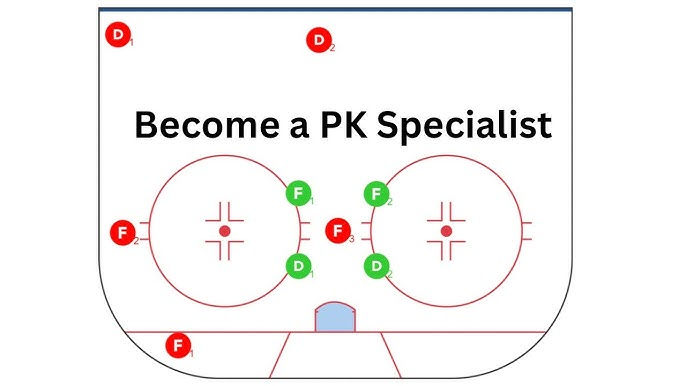First Pass Excellence: The Foundation of the Breakout
- Kevin Geist
- 2 days ago
- 3 min read
If you ask any elite coach what separates efficient teams from chaotic ones, you’ll hear one answer over and over again: the quality of the first pass out of

the defensive zone. It’s the quiet skill that rarely makes highlight reels, but it’s the backbone of modern hockey. Whether you're a defenseman starting the breakout or a winger supporting low, the first pass determines everything that happens next—speed, possession, momentum, and even confidence.
Here’s why that first touch matters so much—and how players can train to master it.
1. It Sets the Tempo of the Entire Shift
A clean first pass instantly puts your team on offense. A sloppy pass forces you to scramble, chase, or defend again.
Clean first pass: You’re moving with pace, in structure, and attacking with numbers.
Bad first pass: You’re stuck in your zone, burning energy, and handing momentum to the opponent.
The breakout doesn’t need to be fancy—it just needs to be clean.
2. It Breaks Pressure and Neutralizes Forechecks
Most youth and high-school players focus on skating the puck out, but the truth is a crisp first pass beats pressure way faster than a solo rush ever will.
A great first pass:
Splits two forecheckers
Forces the opponent to turn
Stops the momentum of aggressive pressure
Creates instant odd-man rushes
When defensemen move the puck quickly, forecheckers lose their structure.
When they hold onto it too long, forecheckers get to dictate the play.
3. It Creates Transition Offense
The NHL’s fastest-scoring teams don’t wait for controlled entries—they score off transition. And transition starts with the breakout.
A strong first pass:
Hits a center with speed underneath
Finds a winger on the wall in stride
Activates a weak-side swing for a 3-man exit
Turns defense into offense in seconds
Master this, and your team becomes deadly through the neutral zone.
4. It Builds Confidence and Chemistry
Wingers trust defensemen who consistently put the puck in the right spot. Defensemen trust wingers who show early, present a target, and secure the puck.
The first pass builds:
Team rhythm
Predictability
Communication
Chemistry between pairs and lines
When players know where the puck is going, everything feels smoother.
5. It Reduces Defensive Zone Time—And Conserves Energy
Every extra second in your zone burns legs. The longer you chase, the more mistakes you make.
A clean first pass:
Ends the shift in your zone
Cuts down on extended cycles
Reduces unnecessary battles
Keeps your lines fresher for offense
Teams that execute breakouts well spend dramatically less time defending—and more time attacking.
6. It Shows Hockey IQ and Composure Under Pressure
The first pass isn’t just about skill—it’s about reading pressure, holding your edges, and timing.
Elite players:
Shoulder-check before retrieving
Scan for options early
Use deception (hips, eyes, weight shifts)
Put pucks into space—not just onto sticks
It’s a play that reveals who understands the game at a deeper level.
How to Train the First Pass
To improve this critical part of your game, focus on:
▪ Retrievals Under Pressure
Work on shoulder-checking and adjusting your angle BEFORE touching the puck.
▪ Passing While Moving
Breakouts don’t happen standing still. Train lateral movement, pivots, and passing in stride.
▪ Wall Work for Wingers
Secure the puck off the rim, make a bump pass, or skate into space. Being “strong on the wall” is a game-changer.
▪ Communication
Call for pucks early. Defensemen make better passes when they know who’s available.
▪ Small-Area Breakout Games
Add pressure, limited time, and quick decision-making so the first pass becomes automatic.
Final Thought
The first pass is the spark that ignites everything that follows. Master it, and you elevate not just your own game but your entire team’s. It’s not the flashiest skill, but it’s the one that wins shifts, wins momentum, and ultimately—wins games.
If you can break the puck out cleanly, you can play at any level.







